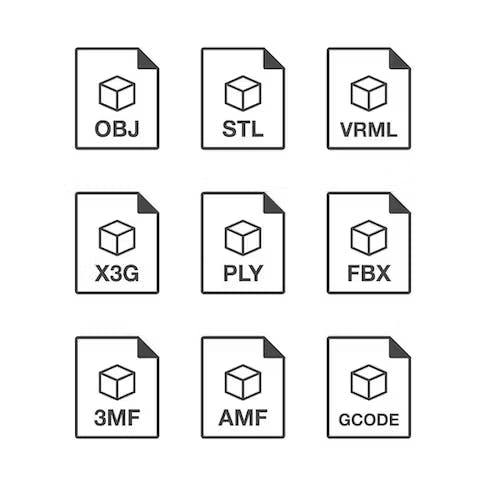
Navigating 3D Printing Spectrum:A Closer Look at 3D Printing Classification
Basis for classification of 3D printing
printing technologies can be broadly classified based on various criteria such that each one of them highlights unique aspects of the processes. Below are the following common bases for the classification of 3D printing:
Process/Technology **: In this criterion, classification is based on the underlying technology or process.
Material type: a classification of 3D printing processes based on the type of materials they use.
Material State: a classification of the 3D printing process based on material state.
Layering Approach: a classification of 3D printing based on the addition of layers.
Resolution/Detail Level: a classification of 3D printing based on resolution or detail level
Application Area: a classification of 3D printing based on primary application Areas.
Material Processing: It's classified based on the way the material is processed.
Industrial/Consumer: It's classified based on their typical usage in industrial, desktop or consumer usage.
Biocompatibility: classification of 3d printers based on their compatibility for producing biocompatible 3d printers.
Post Processing Requirements: classification based on their post processing requirements.
Production Volume: a classification based on production volume suited to different scales of production
Print speed: Printers can be classified based on their print speeds into various categories, ranging from slower desktop printers to faster industrial and production-grade machines. Keep in mind that print speed is influenced by factors like layer height, complexity of the object, and chosen print settings. Here's a classification based on print speeds.
CLASSIFICATION BASED ON PROCESS:
FDM- FUSED DEPOSITION MODELLING
SLA- STEREOLITHOGRAPHY
DLP- DIGITAL LIGHT PROCESSING
SLS- SELECTIVE LASER SINTERING
SLM- SELECTIVE LASER MELTING
EBM- ELECTRON BEAM MELTING
BINDER JETTING
MATERIAL JETTING
LOM- LAMINATED OBJECT MANUFACTURING
DED- DIRECTED ENERGY DEPOSITION
CLIP- CONTINUOS LIQUID INTERFACE PRODUCTION
INKJET 3D PRINTING
POWER BED
HYBRID PROCESSES
CLASSIFICATION BASED ON MATERIAL TYPE
PLASTICS AND POLYMERS
METALS
COMPOSITES
CERAMICS AND GLASSES
BIOLOGICAL AND FOOD MATERIALS
OTHER MATERIALS
CLASSIFICATION BASED ON MATERIAL STATE
LIQUID RESION
POWDER
THERMOPLASTIC FILAMENT
LIQUID/GEL INK
SOLID SHEETS/LAYERS
WIRE/RODS
OTHER STATES
CLASSIFICATION BASED ON LAYERING APPROACH
ADDITIVE APPROACH
SUBTRACTIVE APPROACH
CLASSIFICATION BASED ON RESOLUTION
HIGH RESOLUTION
MODERATE RESOLUTION
LOW RESOLUTION
CLASSIFICATION BASED ON APPLICATION AREA
PROTOTYPING & MANUFACTURING
AEROSPACE & AUTOMOTIVE
HEALTH CARE
ART & DESIGN
EDUCATION & RESEARCH
FOOD AND CULINARY APPLICATION
CLASSIFICATION BASED ON MATERIAL PROCESSING
MELTING & SOLIDIFYING
PHOTOPOLYMERIZATION
EXTRUSION
JETTING & CURING
POWDER BINDING
SHEET LAYERING
SPECIAL TECHNIQUES
CLASSIFICATION BASED ON INDUSTRIAL/CONSUMER USAGE
INDUSTRIAL
CONSUMER
DESKTOP
CLASSIFICATION BASED ON POST-PROCESSING REQUIREMENTS
MINIMAL POST-PROCESSING
MODERATE POST-PROCESSING
SIGNIFICANT POST-PROCESSING
CLASSIFICATION BASED ON BIOCOMPATIBILITY
BIOCOMPATIBLE PROCESSES
POTENTIALLY BIOCOMPATIBLE PROCESSES
LESS BIOCOMPATIBLE PROCESS
CLASSIFICATION BASED ON PRINTSPEED
LOW TO MODERATE SPEED
MODERATE
MODERATE TO HIGH
HIGH SPEED
VERY HIGH SPEED
VARIABLE SPEEDS